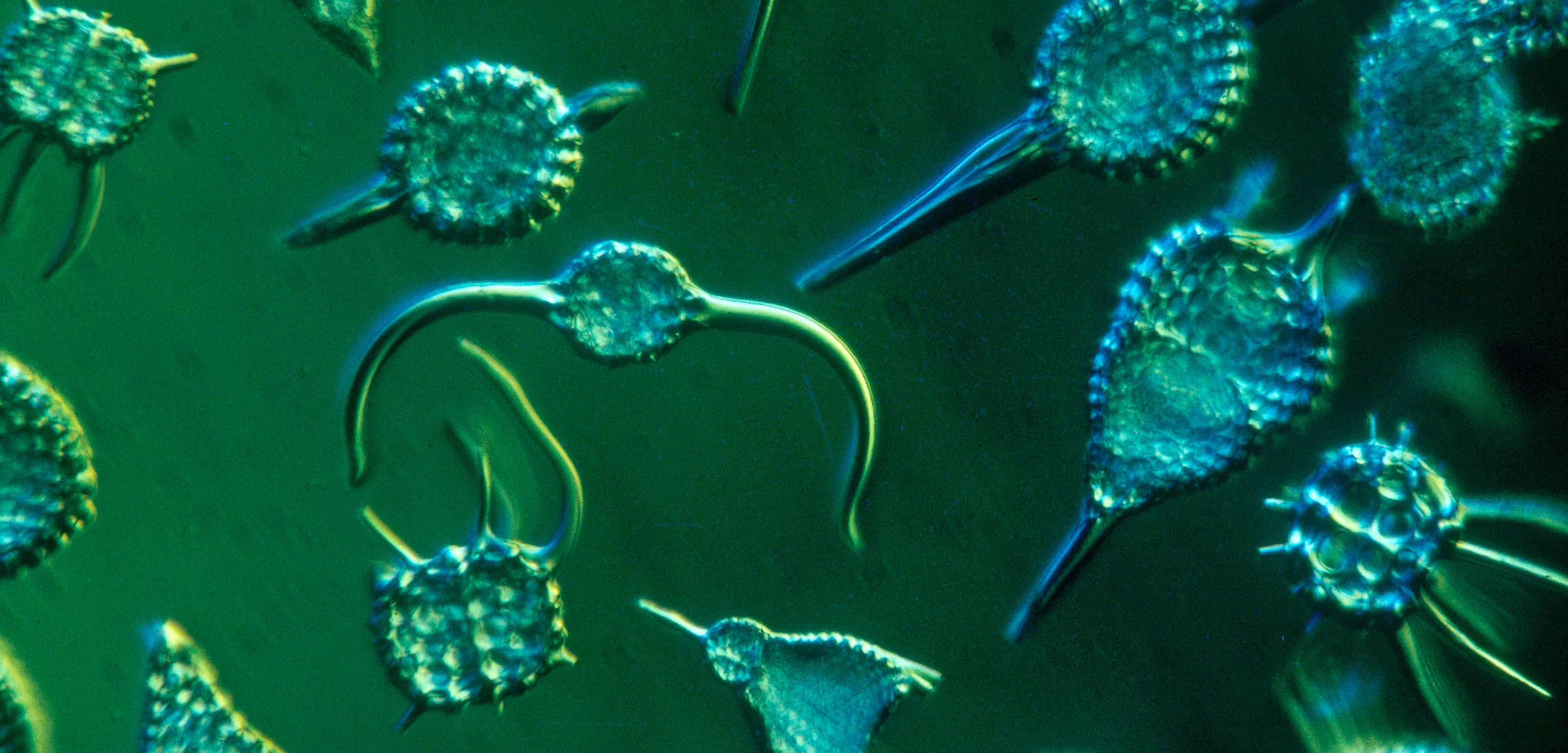Tiny Fossils Record Big Shifts in Ocean Currents
Minerals stored in microscopic fossils hint at the subtle ways ocean currents link far-flung food webs.
Article body copy
About 40 million years ago, the southern tips of South America and Australia began to drift away from Antarctica, a tectonic shift that opened a major new connection between the Atlantic, Indian, and Pacific Oceans. Deep water began to flow east through the newly opened Drake Passage and Tasman Gateway, circling Antarctica, and a branch of this new Antarctic Circumpolar Current curved northward to the central Pacific where it rose to the surface. Over time, this current replaced the existing flow—one that had moved water from the North Pacific southward—as the dominant source of deep, cold water in the central Pacific. It was a major change in how the oceans circulate, and it caused dramatic global cooling that spurred the growth of Antarctica’s ice sheet.
In previous studies, scientists had pieced together the timing of those geological events by examining the chemical makeup of rocks and sediments on the seafloor. Now, new research has independently confirmed the changes in these Paleogene-era currents, and the finding offers a clue about how currents carried nutrients between distant ecosystems in the ancient ocean.
“Tectonic movements and ocean circulation shifts are part of what triggers changes in nutrient distribution and therefore hotspots of marine life,” says Guillaume Fontorbe, a geologist at Lund University in Sweden. Fontorbe studied the change in currents by analyzing the preserved skeletons of sponges and single-celled organisms known as radiolarians that had been preserved on the Pacific seafloor for the past 50 million years.
Specifically, Fontorbe and his colleagues analyzed the composition of silicon in the animals’ shells. Silicon has several isotopes, or variations of the chemical element with slightly different masses. The most common silicon isotope is silicon-28, but there’s also a heavier version, silicon-30. When a sponge or radiolarian filters the mineral silica out of the water to build its skeleton, it tends to favor silicon-28 because the lighter isotope takes less energy to process than the heavier one.
Fontorbe says that when the amount of silica in the water is high—which happens because silica from weathered rocks washes into the sea from the land—sponges and radiolarians will have a higher proportion of silicon-28 in their skeletons. In this way, analyzing the ratio of silicon-28 to silicon-30 in preserved shells gives a decent estimation of the amount of dissolved silica in the water when the organisms lived and died.
So when Fontorbe and his colleagues examined microscopic fossils collected from the Pacific seafloor, they found that the proportion of silicon-28 started to increase around 37 million years ago, aligning with the timing of the opening of the Drake Passage identified by previous research.
The analysis shows that while the water flowing into the central Pacific from the north had been low in silica, the new southerly current was rich with it, though Fontorbe and his colleagues aren’t sure why. In modern times, the Southern Ocean is rich in dissolved silica, partly because there is a dearth of single-celled silica-using algae in the water there, so more silica is carried off by the current. The new research suggests the Southern Ocean may have been similarly depleted 37 million years ago.
Fontorbe is surprised to see how much dissolved silica was reaching the Pacific on the new southern current. Before this study, scientists thought that the concentration of dissolved silica in the central Pacific had been steadily declining for the past several million years. But as the new research shows, the Pacific is actually gaining silica. Fontorbe and his colleagues are still not sure how to explain it, or precisely what it means, but their findings suggest that the ocean floor may hold many more insights into ancient ocean circulations and their impact on marine ecosystems.

